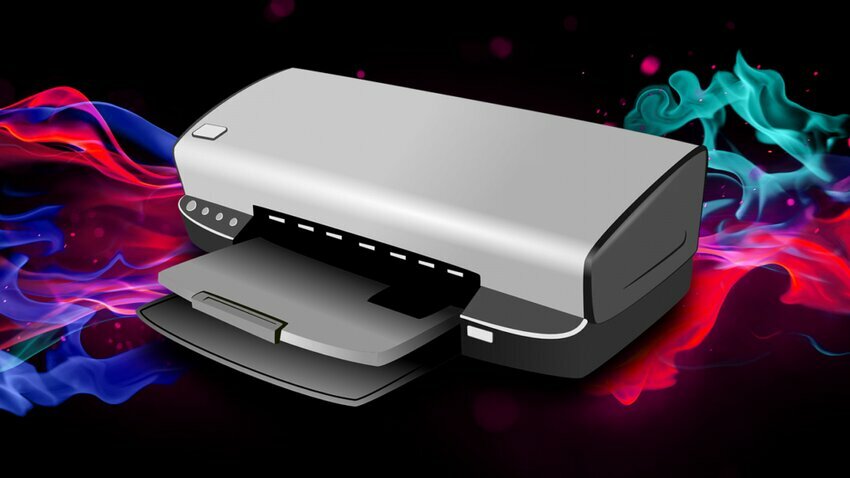 Pixabay-printer
Pixabay-printerHewlett-Packard develops and provides hardware and software for companies. The Palo Alto-based enterprise traces its roots to 1939, although it is best known for making personal computers and printers. It merged with Compaq in 2002 and acquired Electronic Data Systems in 2008. In 2015, it renamed itself HP Inc.
Sustainability is its focus, namely climate change. By 2040, HP aims to hit net zero — not just in its operations and among the fuels it buys but also in its value chain: its Scopes 1,2, and 3 emissions. By the end of this decade, it wants to reduce its absolute emissions by 50% — a goal it set last year. They have fallen 9% since 2019, primarily because of energy efficiency gains. It uses science-based targets to drive emissions reductions, all to limit global warming to 1.5 degrees Celsius.
At the same time, it has reduced single-use plastic packaging by 44% compared to 2018. "By shifting toward circular design principles, we are working to increase value for customers while reducing environmental impacts across the value chain,” the company says. Indeed, its goal is to reach 75% circularity for products and packaging by 2030.
— Reduce Scope 1 and 2 greenhouse gas emissions from global operations by 60% by 2025 compared to 2015. HP’s global operations produced 159,500 metric tons of Scope 1 and Scope 2 CO2 emissions, 59% less than its 2015 baseline.
— Use 100% renewable electricity at its operations by 2025. HP’s global operations procured and generated 264,054-megawatt hours of renewable electricity, or 54% of its global electricity consumption.
— Recycle 1.2 million metric tons of hardware and supplies by 2025 using a 2016 baseline,
— Use 30% post-consumer recycled content plastic across HP’s systems and print product portfolio by 2025. It is 13% of the way there.
— Eliminate 75% of single-use plastic packaging by 2025, compared to 2018. It is 44% of the way there.
— Reach zero waste in HP operations by 2025. In 2021, the company achieved an 86.4% landfill diversion rate globally.
“Transforming HP to help drive a more efficient, circular, and net zero carbon economy is central to our Sustainable Impact strategy. HP has achieved triple “A” scores for transparency and action on climate, forests, and water for several consecutive years. The company has also been recognized as a CDP Supplier Engagement Leader,” the company says.
HP relies on hundreds of suppliers, ranging from multinational companies to small businesses. Each partner must maintain sustainability goals as part of their corporate mission. “To reduce our footprint, we collaborate with suppliers to decrease greenhouse gas (GHG) emissions, water use, waste, and other environmental impacts. Suppliers representing 95% of HP’s total production supplier budget have undergone a social and environmental assessment.”
Its goal had been to double factory participation in its supply chain sustainability programs by 2025 compared to 2015. It has already achieved this aim, with a 114% increase through 2021. HP says it discloses the names and locations of its major suppliers — those making up 95% of its manufacturing spend, all in the name of transparency.
And it has training programs that ensure quality control in the sustainability areas. For example, In 2021, it worked with at least 27 suppliers representing 60% of HP’s production spend to set science-based emissions reduction targets, increase their use of renewable energy, and improve the deployment of energy management and efficiency.
Its goal is to help its suppliers cut 2 million metric tons of CO2 between 2010 and 2025. Through 2020, its suppliers have avoided 1.46 million metric tons of CO2. It says that in 2020, its suppliers that make HP products generated 2.7 million metric tons of Scope 1 and Scope 2 CO2 emissions, which is 8% less than in 2019. Much of that improvement is due to using green energy or entering into power purchase agreements.
“Our production and non-production suppliers are essential partners as we work to drive net zero carbon and improved resource efficiency throughout the value chain,” HP says. For more than a decade, we have worked closely with our suppliers to improve their environmental programs and report progress transparently. Our Supplier Responsibility Scorecards are central to our efforts to set expectations, evaluate performance, and drive ongoing improvement.”
At the same time, HP works with its suppliers to cut their waste streams. In 2020, they generated 126,000 metric tons of nonhazardous waste associated with HP, which is a 14% decrease from 2019. This can be attributed to recycling and re-use efforts. Meanwhile, suppliers generated 46,000 metric tons of hazardous waste in 2020, down by 13% from the previous year. Its hazardous waste consist mostly of ink cartridges.
HP’s operations do not generate a lot of waste. Still, the company employs “reduce, reuse, and recycle” policies. It generated 13,900 metric tons of nonhazardous waste in 2021 while achieving an 86% landfill diversion rate.